Tetra in aquarium
With almost two thousand species, tetras are one of the largest fish groups in the order of bony fishes at all. Also regarding their sizes they show an amazing repertoire. Some tetras can reach up to one meter in length, while others remain relatively smaller at just 13 mm. They can be easily distinguished from other fish species by their adipose fin. This is located exactly between the dorsal and caudal fin, with some animals a somewhat closer look is necessary. They have rather elongated and laterally flattened bodies, some species like the Reds from Rio or the Red-Blue Colombian are also high-backed. Particularly striking in terms of body structure, however, is the Blackwing hatchetfish.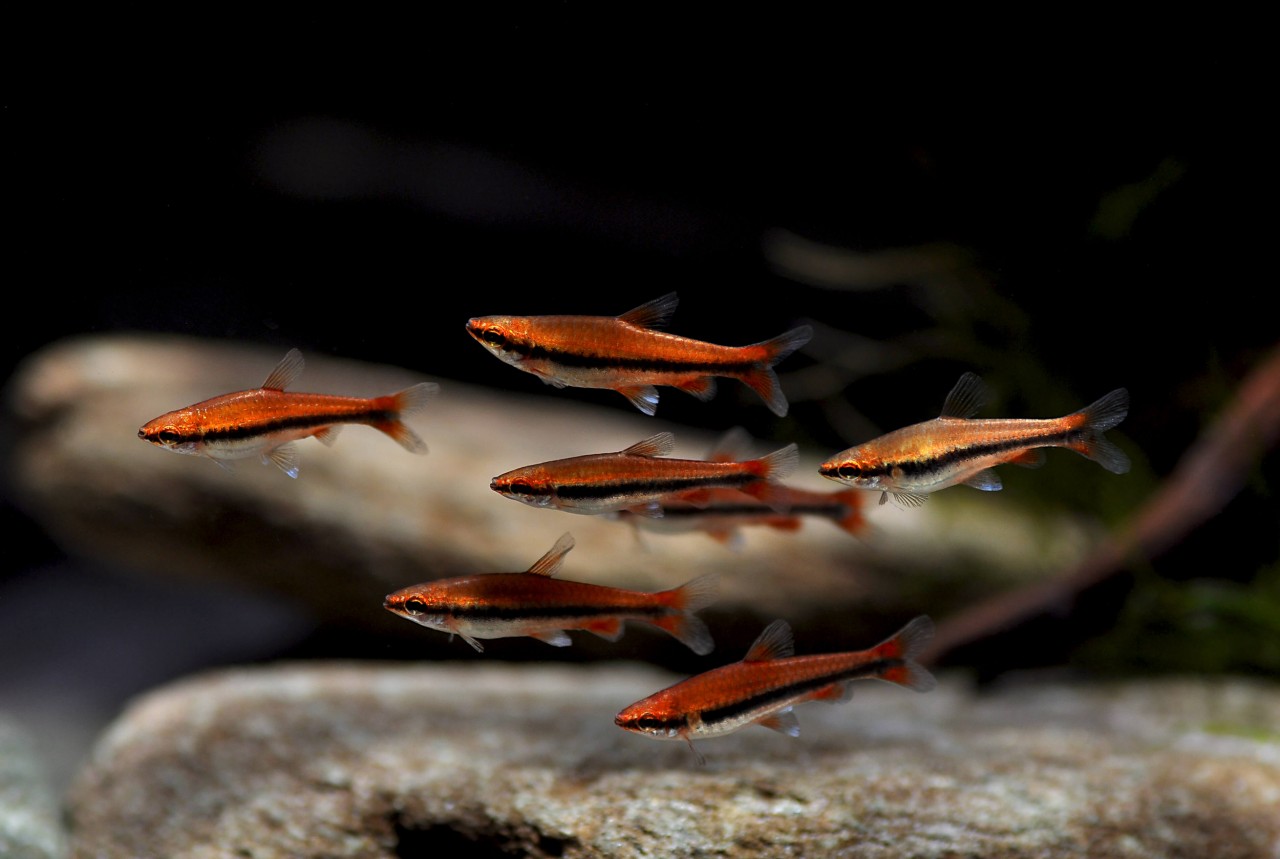
The origin of tetras
The habitats of tetras are mainly in the Central and South American region, but some come from the African continent, as well as parts of Asia and Europe. Among the best known species are mainly the salmon and trout, as well as trout-like, in aquaristics are mainly the red neon, but also the red-headed tetra or the red of Rio hardly imaginable without. Above all in the swarm maintained they give an impressive picture, if they pull their rounds. The shoal gives them security, they also draw their strength from this and then seem more colorful. Usually tetras are peaceful fish that can be socialized well, with some exceptions. Mostly American tetras come from streams with black water or clear water and relatively acidic pH values.
Breeding tetras
Tetras can also be bred, although this is not quite as easy as with livebearers. Especially with a prepared spawning aquarium the goal is reached faster with these spawn predators, which mainly spawn with the rising sun. To get them in the mood, the brooders should be fed well with a high quality live food over a few days. Enchyträen, Tubifex, but also mosquito larvae are suitable for this. Above all, an increase in temperature and fine plants such as Java moss or Cabomba support the project. After spawning, the breeding animals should be removed from the spawning aquarium again. The young are fed with infusoria, dust food or even slipper animals until they are big enough to be transferred to the parent aquarium.
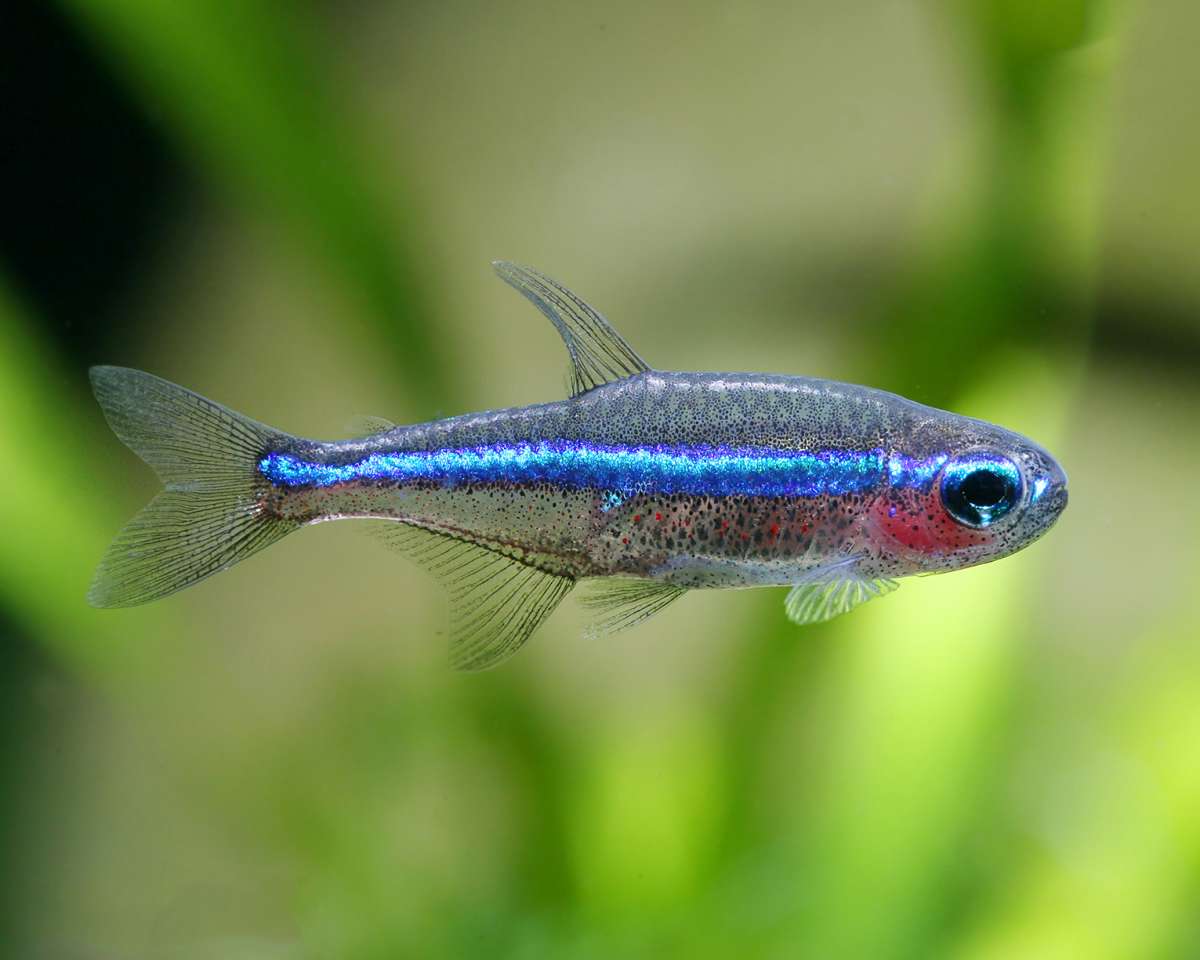
Aquarium design for tetras
If possible, the aquarium for tetras should have a dark and non-reflective substrate. In places, the background but also the edges can be densely planted to create retreats. However, free swimming space should not be underestimated or neglected. Tetras are excellent candidates for a South American tank, which is also planted accordingly, Alternanthera, but also Echinodorus or floating plants are suitable. In general, the aquarium may be quietly somewhat shaded. Roots and stone structures that are secured against falling over offer territorial marking and hiding places.
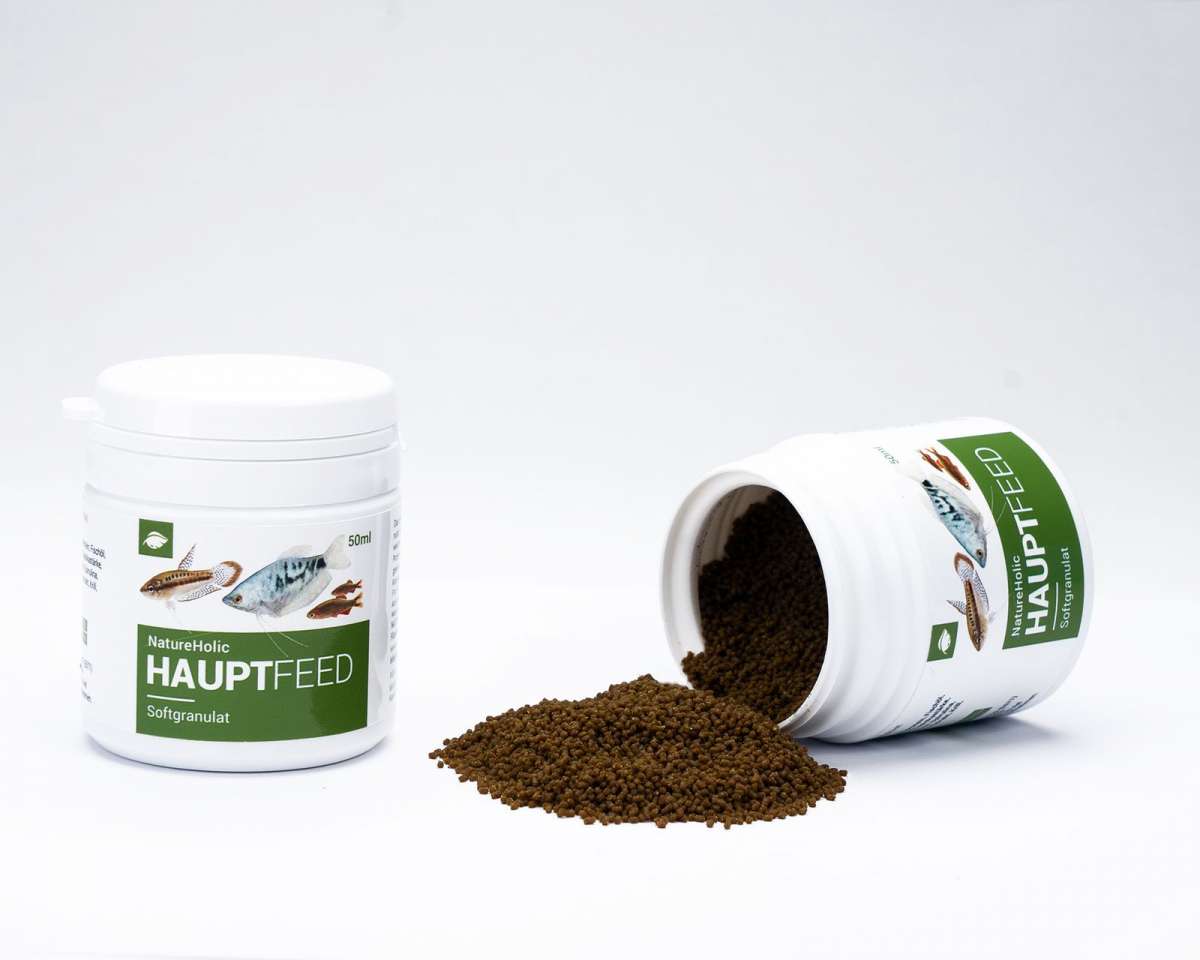
Feeding tetras
These omnivores are also quite uncomplicated when it comes to feeding and will eat standard flake and dry food without any problems, but should be regularly fed with high-quality live and frozen food. Their healthy growth is also well supported by a varied menu and forms equally magnificent colors in the process. Nevertheless, attention should be paid to the respective food requirements, so that the great fin carriers get all the necessary nutrients they need for a long and healthy life.
Behavior of tetras in the aquarium
Tetras are sociable schooling fish that should rather be kept in larger groups so that they feel comfortable. Thus, the group should consist of at least 7-10 animals of the same species, but some may well be combined in their color schemes. This way they also become a bit more offensive in their behavior and scurry around the aquarium all day. If their group is too small they start to become shy and hide among other things. However, some tetra species differ in their behavior, so a closer look may be dared, especially regarding their suitability for socialization with shrimp. Although they swim around in rather loose groups or sometimes alone, they always seek the proximity of their shoal in case of danger. Occasionally they even form small territories during mating season, which is actually a rather untypical behavior for schooling fish.
Tetras socialize
The lively fish prefer a large swimming area and are on the move all day. Therefore, when selecting the accompanying fish, care should be taken that they can cope with the lively behavior without any problems and that they do not let themselves be put "against the wall", because then they tend to retreat and are rarely seen. Great for socialization are therefore loricariids, but also South American cichlids or zebra danios. Also with shrimps some get along well, likewise with dwarf crabs. Some special tetra species should better be kept in a species aquarium, so that their peculiar social behavior is shown to its best advantage.
The most popular tetras for the aquarium
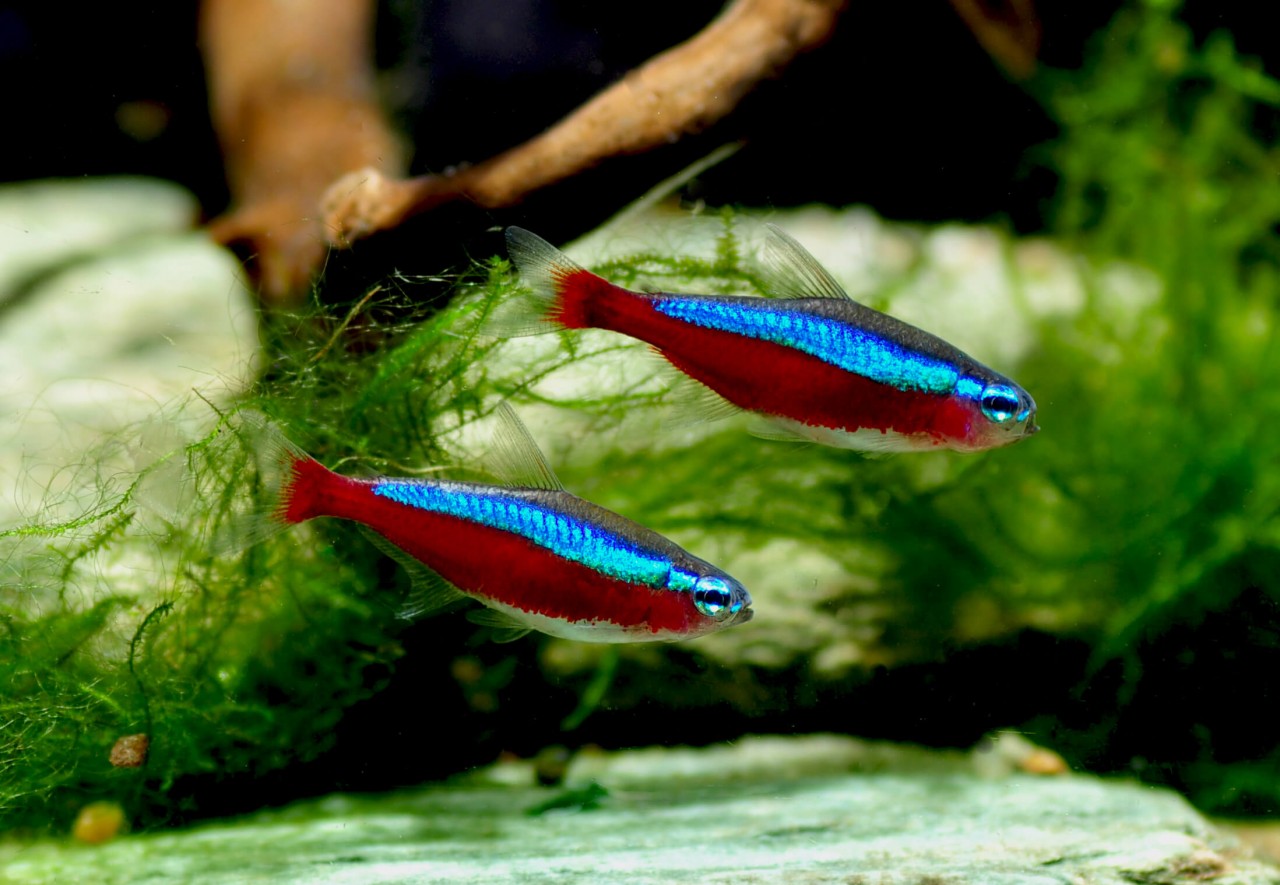
Red Neon - Paracheirodon axelrodi
With one of the best known smaller remaining tetras from South America. Tolerates soft to medium hard water and can also be socialized with shrimp, although occasionally a young one might be eaten. For breeding, this fish requires extremely acidic water. It is one of the few true schooling tetras that should be maintained in larger numbers.
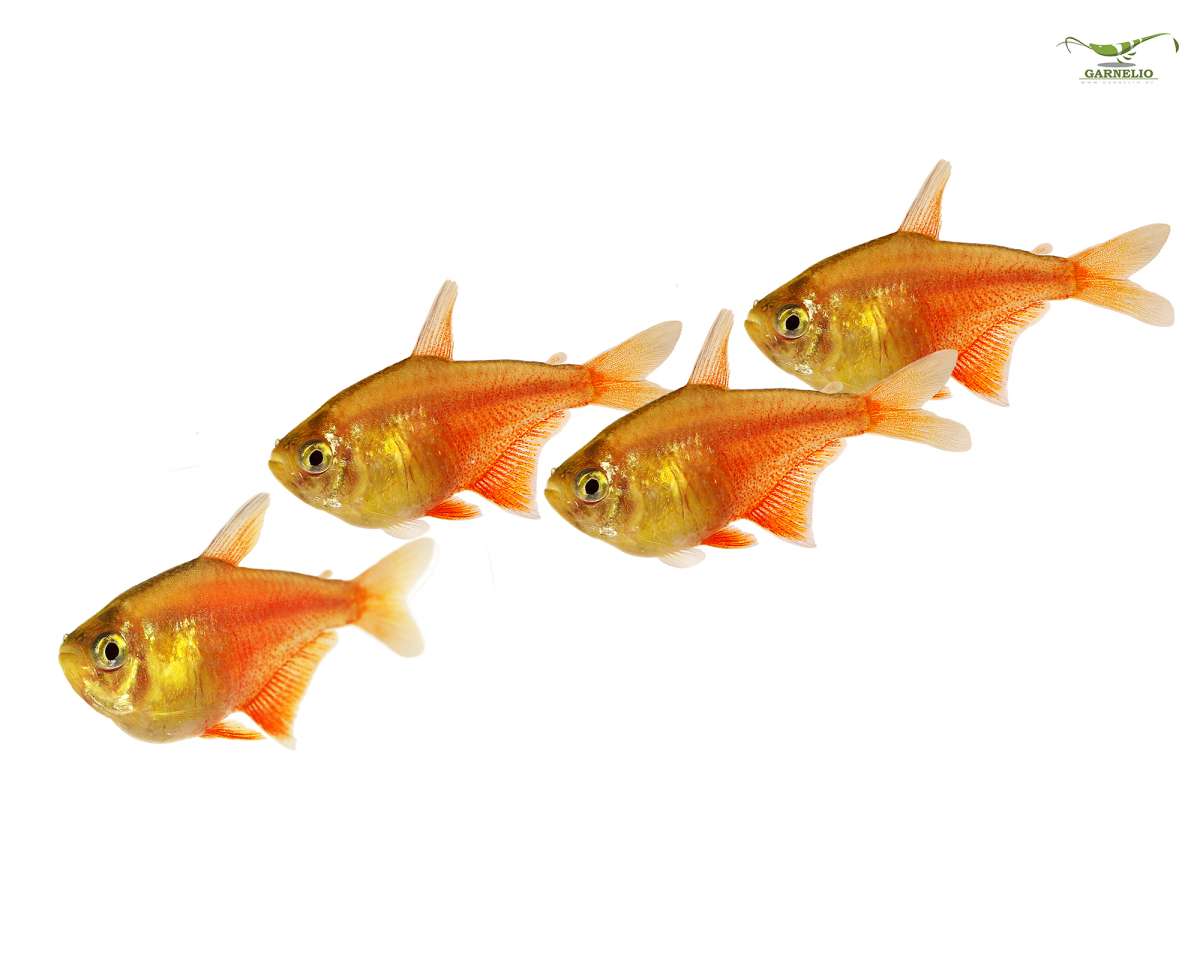
Red of Rio - Hyphessobrycon flammeus
The Red of Rio is an old hand in the aquarium hobby, which comes into its own especially in planted aquariums, because in rather bare tanks it makes itself invisible in places. It is easy to breed and tolerates somewhat harder water.
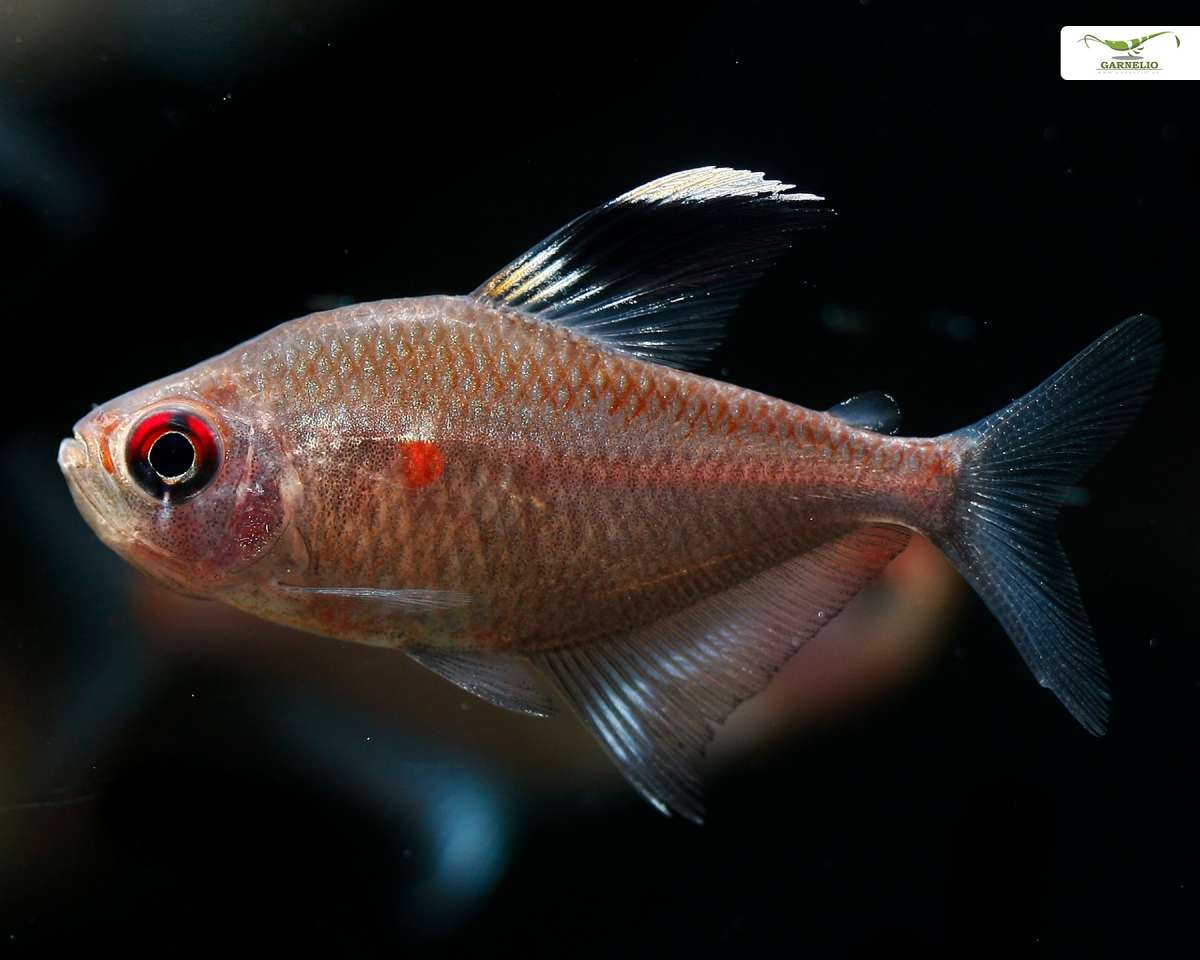
Cherry spotted tetra - Hyphessobrycon pulchripinnis
Lemon tetras are really very beautiful fish, which do very well in soft water aquariums. As a stock for an oxygen-rich stream aquarium they are just right! They can be relatively well socialized with shrimp, provided there are sufficient hiding places in the aquarium. It should be maintained in groups of at least 10 animals.
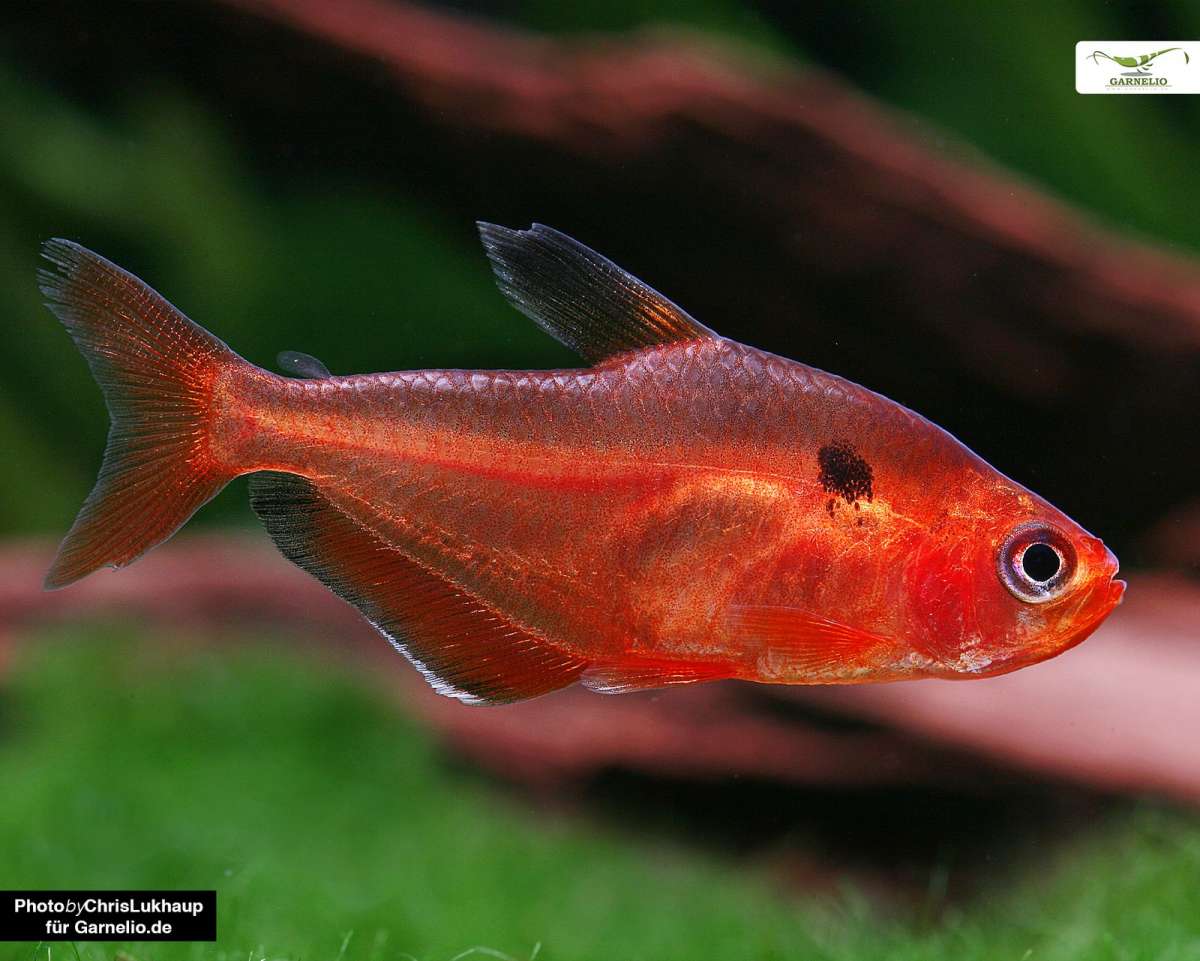
Blood tetra - Hyphessobrycon callistus
They are suitable for somewhat larger aquariums and are most notable for their sometimes belligerent behavior. Due to their name-giving blood-red color they are real eye-catchers, which can be maintained well in medium-hard water. They can also be socialized with amano shrimp or well reproducing dwarf shrimp species. They should be fed a balanced diet, otherwise they tend to nibble their fins.
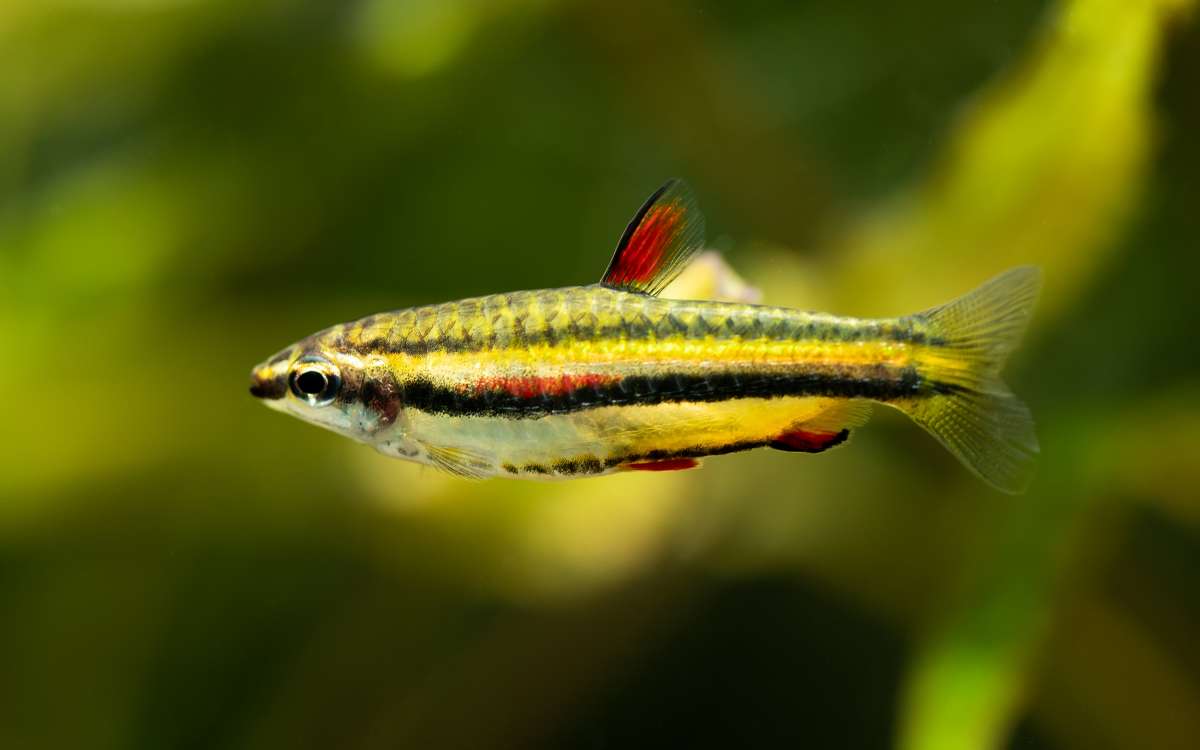
Dwarf tetra - Nannostomus marginatus
The beautiful striped dwarf tetra is a very small and rather calm representative of the genus Nannostomus. A small shoal with 10 animals fits already in standard tanks with 60 cm edge length. It also gets along well with shrimps. The red accents in the fins and on the body of this pretty eye-catcher are just great and come also between green water plants well to the validity.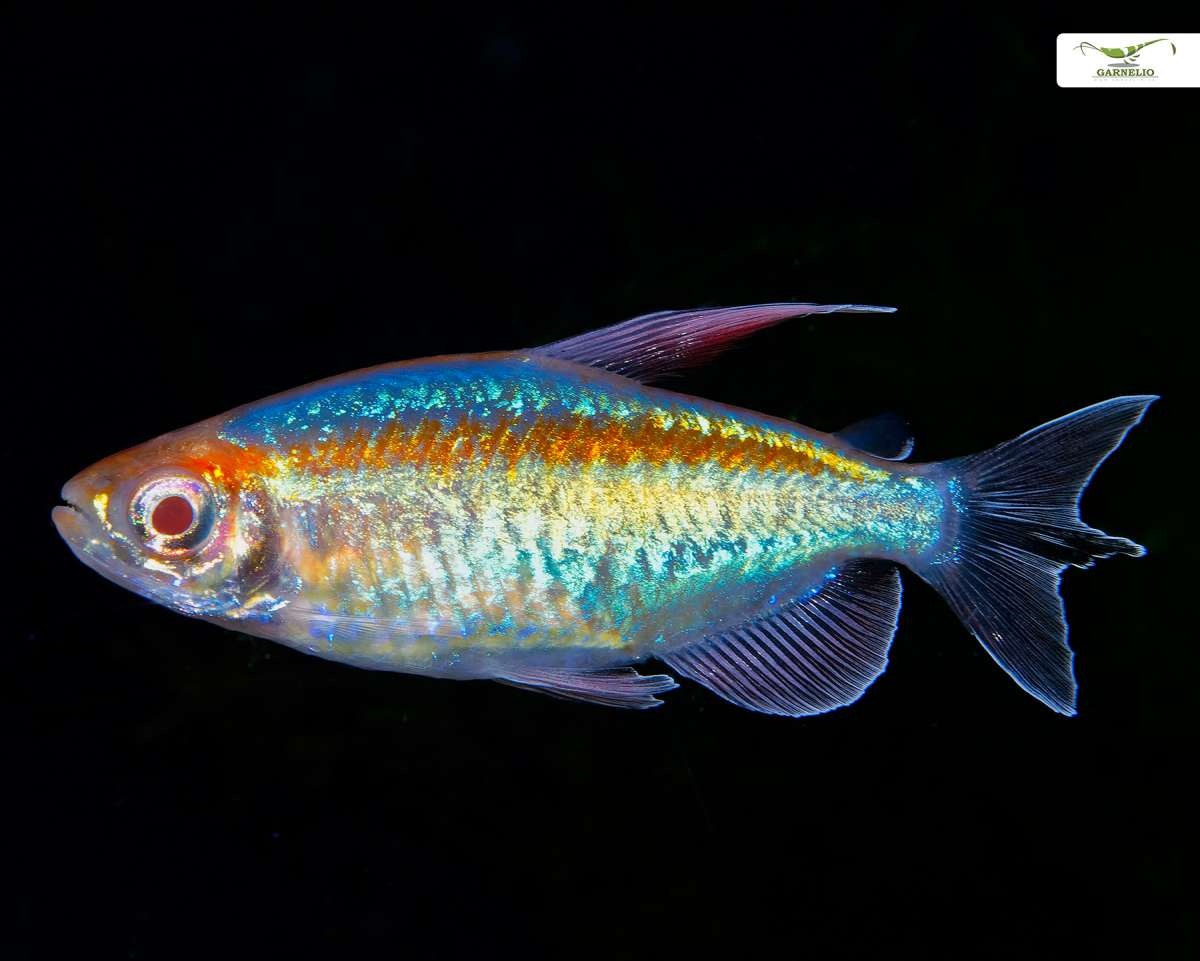
Congo tetra - Phenacogrammus interruptus
This African is well suited for large aquariums of at least 200 liters. With its bright blue color it is a great eye-catcher, which can be socialized also class with Congo catfish. Especially its rather unusual fin shape catches the eye immediately. It originates from shady rainforest streams with soft water. Dwarf shrimps are likely to be eaten, also other invertebrates should be better avoided.
In conclusion
Tetras are great and colorful aquarium fish, which should not be missing in any aquarium and especially between aquatic plants splendidly come into their own. It's hard to get your nose away from the glass!
